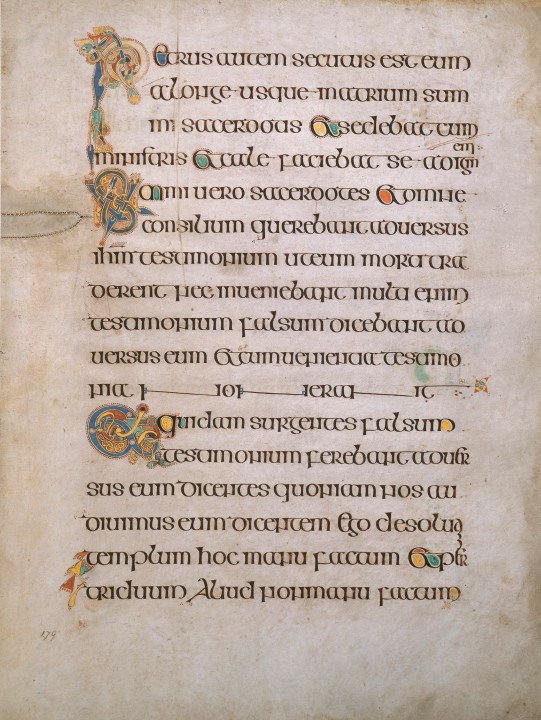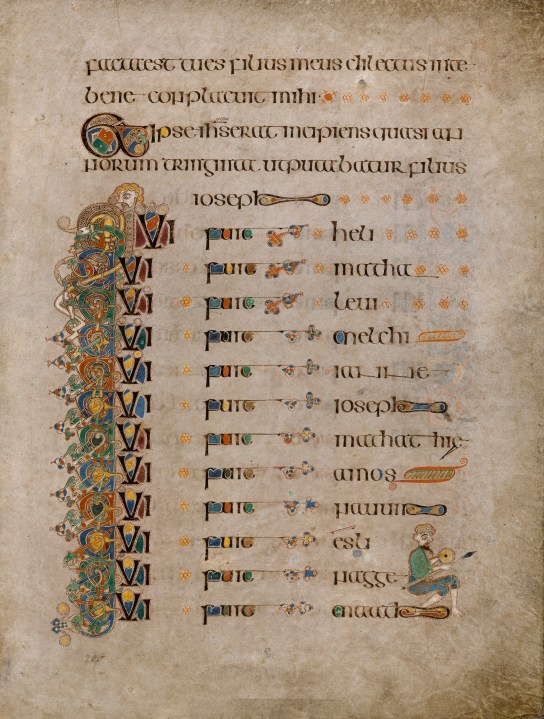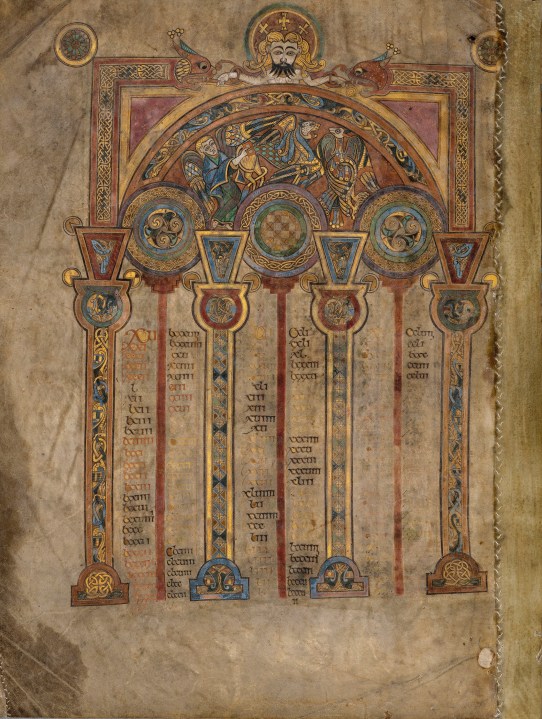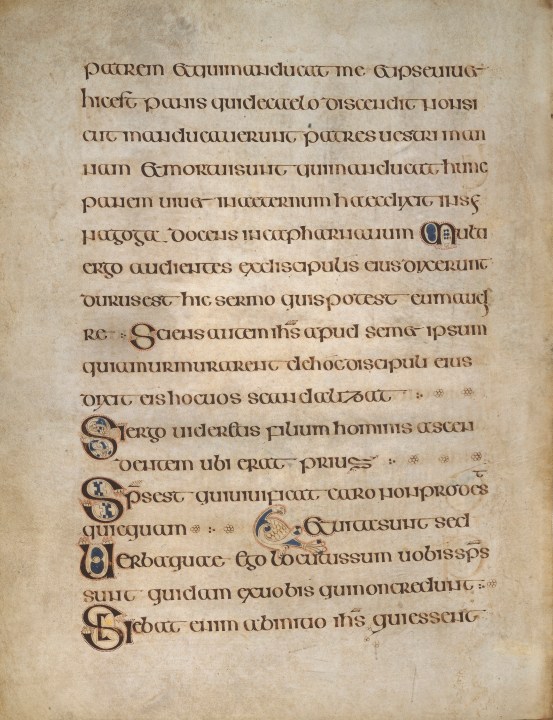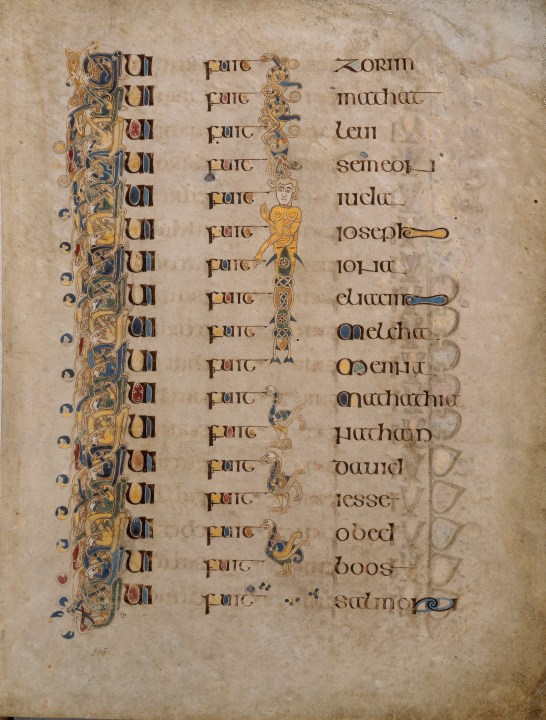
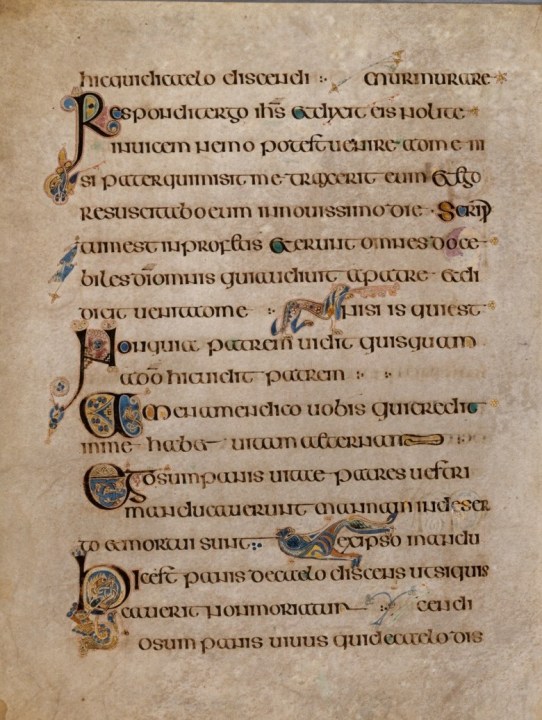
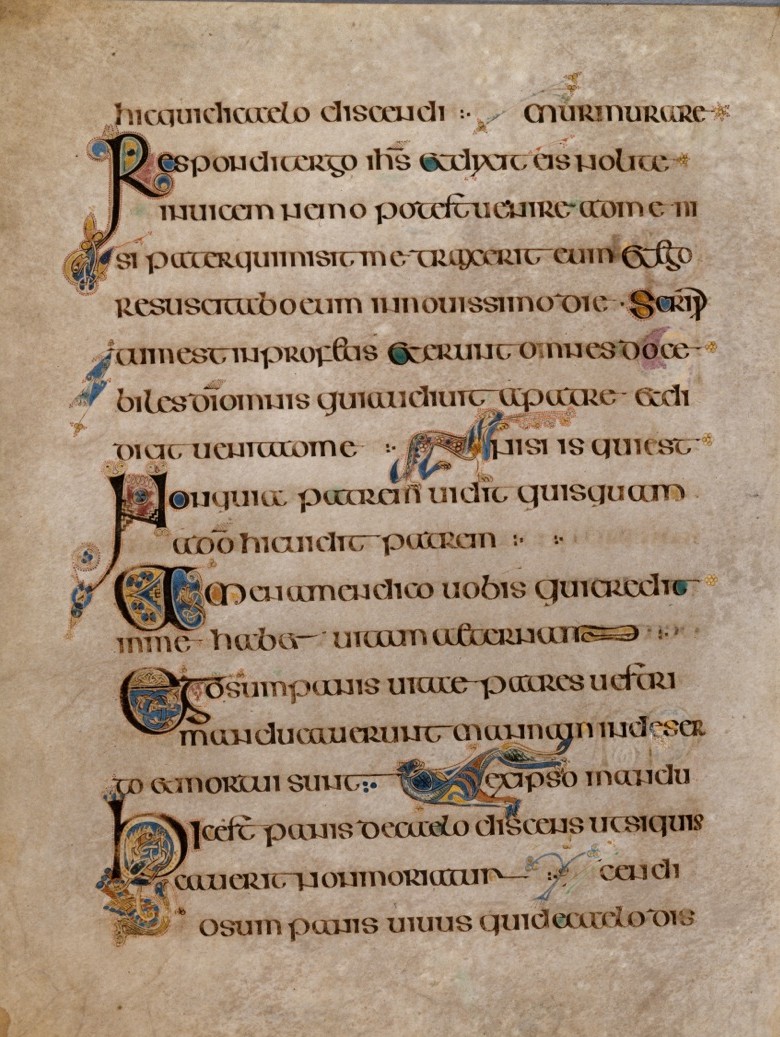
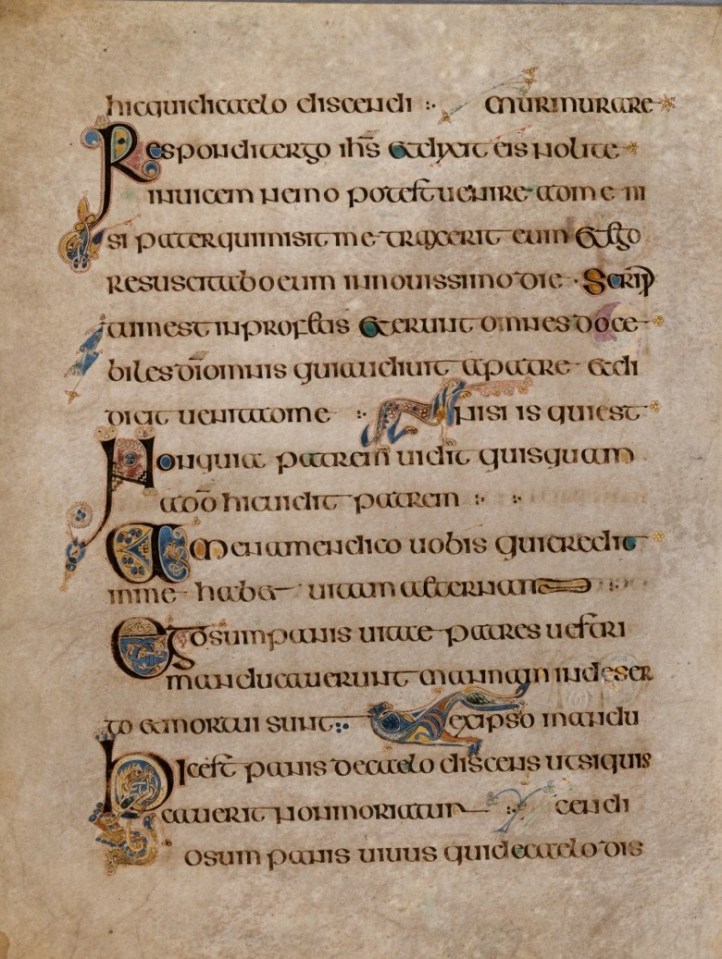

Folio 309v, Book of Kells
The two lions on the left-hand folio, whose life-giving breath is shown in the form of grapes, are key elements in this opening (John 6.42-57), which deals with the eucharist (a Christian sacrament in which bread and wine are consecrated and consumed in remembrance of Jesus’s death). The lions frame the passage in which Jesus tells his doubtful listeners that whoever believes in him will have everlasting life: qui credit / in me habet uitam aeternam (lines 11-12).
The lions look across to the parallel passage on the facing folio, lines 10-13, to Jesus’s message: ‘He that eateth my flesh and drinketh my blood hath everlasting life: and I will raise him up in the last day.’ A further celebration of the eucharist comes in line 17 on folio 309v, in the form of a calligraphic chalice and bunch of foliage, where the central stem may be wheat, a reference to the bread of life.
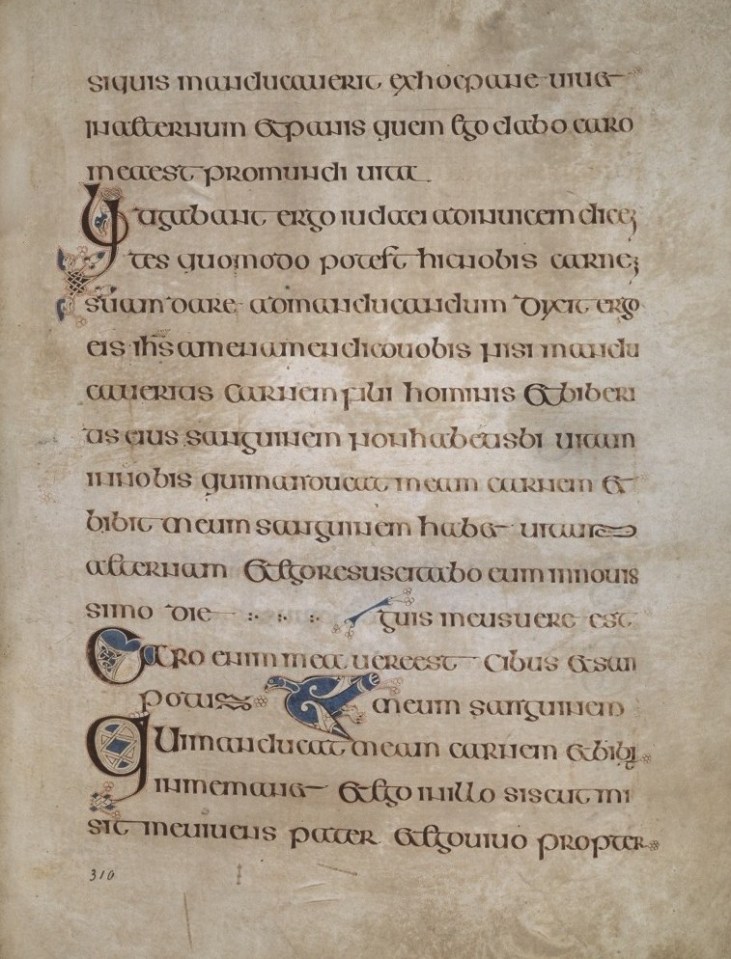
Folio 310r, Book of Kells
Folio 310r contains another subtle but important element of decoration. At the beginning of verse 53 of the Gospel of John on line 4, the Jews struggle with Jesus’s words, asking ‘How can this man give us flesh to eat?’. The answer is contained in the first two letters of Litagabant ‘they were arguing’, where two animals hold symbolic eucharistic grapes, and vines or olives also form the interlace, a visual allusion to the blood of Jesus and the sacrifice of his body on the cross.
On line 13, a highly stylized vessel has grapes emerging from both ends. An eagle perches in the centre of line 15, highlighting the importance of the text Caro enim mea vere est cibus et sanguis meus vere est potus ‘For my flesh is meat indeed: and my blood is drink indeed’. The eagle symbolises ascension in the Book of Kells but is also the evangelist symbol for John. Blue is the predominant pigment used across this folio. The blue in the Book of Kells is derived from woad, a flowering plant used throughout Europe and Asia to produce dyes and pigments.




